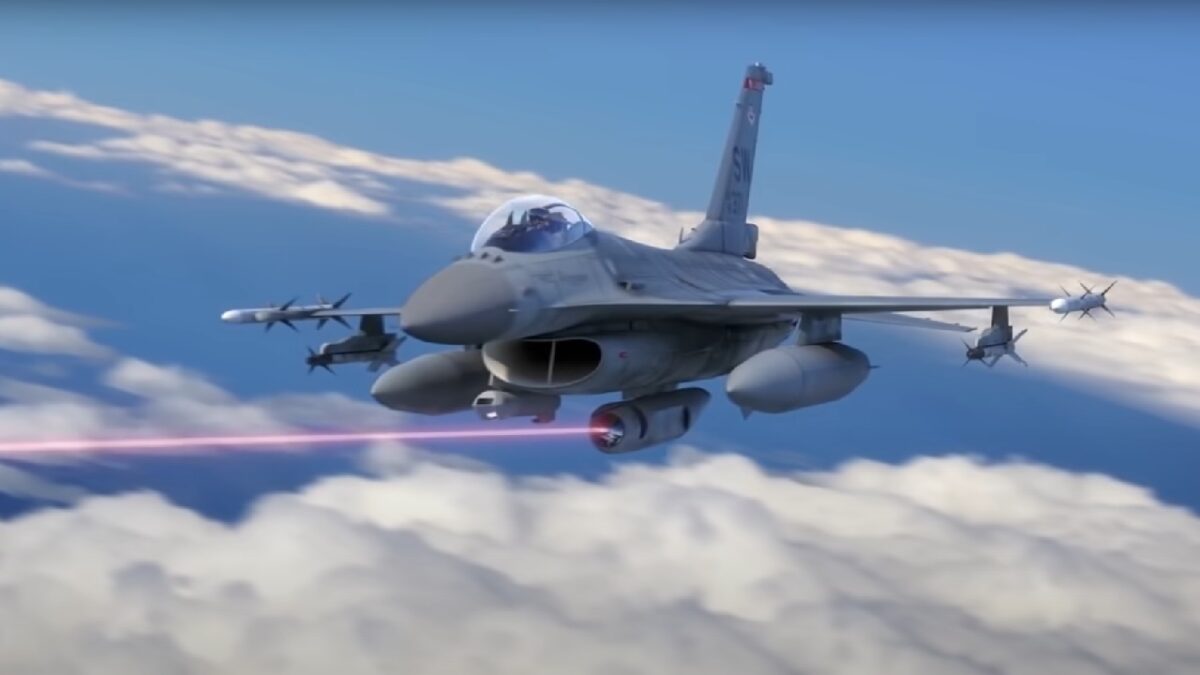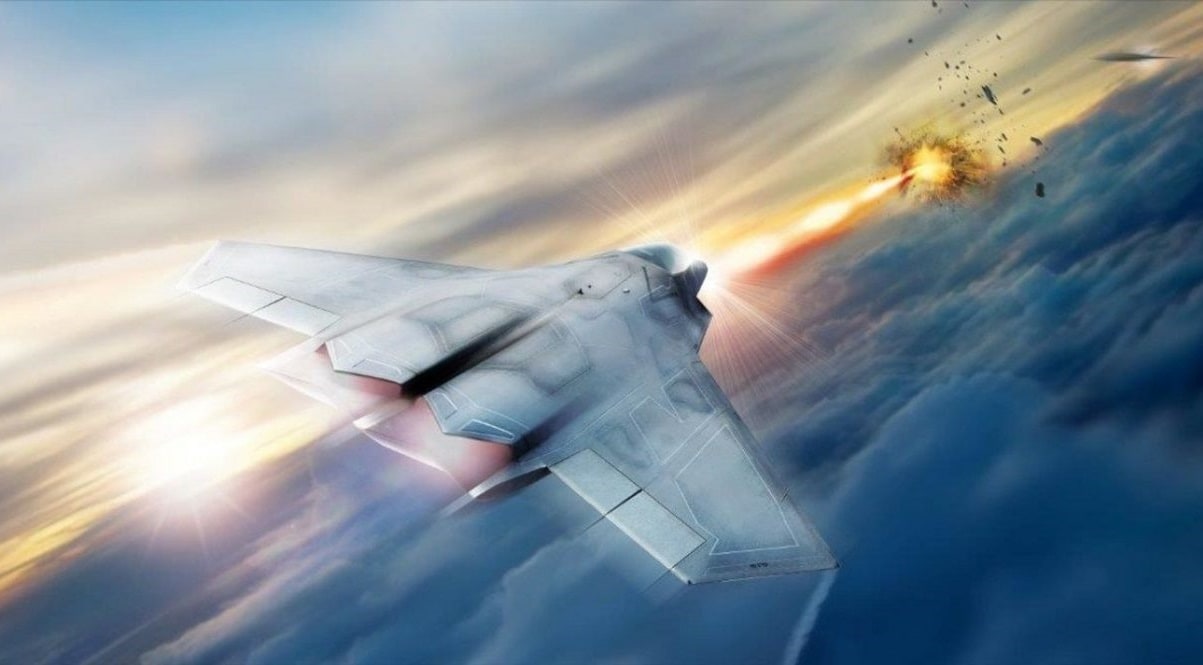LANCE: How the Air Force Puts Lasers on Fighters Like the F-35? This article is what a former U.S. Air Force officer had to say on the subject: “Mini-Me, stop humping the la-zer” “You know I have one simple request and that is to have sharks with frickin’ laser beams attached to their heads now evidently my cycloptic colleague informs me that that can’t be done.” For the benefit of any of our readers who are unfamiliar with the late 1990s/early 2000s pop culture, those quotes are from Mike Myers’s Dr. Evil character (a parody of Ernst Stavro Blofeld in the 007 films) in the Austin Powers film franchise. Obviously, the Austin Powers movies are sci-fi comedies. However, thanks to Lockheed Martin, the notion of an Airborne Laser (ABL) weapons system may become a reality, in the form of the Laser Advancements for Next-generation Compact Environments (LANCE).
If At First You Don’t Succeed …
The concept of the airborne laser and directed-energy weapons has, to quote the old Virginia Slims cigarette advert slogan, “come a long way, baby.” Back in 2002 when I was a 2nd Lieutenant at Air Battle Manager School (training for AWACS and JSTARS) at Tyndall AFB, Florida, there was quite a bit of buzz about the ABL system being mated with a converted Boeing 747 as the launching platform; testing had already begun back in 1996. One of our guest speakers at the Tyndall AFB Officer Club’s Friday “Warrior Calls” was then-Col. (now retired four-star General) Lori Robinson, who spoke with considerable enthusiasm about the prospects for the system’s future success.
Another strong advocate of the ABL concept was, and still is, Riki Ellison, Chairman of the Missile Defense Advocacy Alliance (MDAA) – And yes, folks, the same Riki Ellison who won a college football national championship with the USC Trojans and three Super Bowls with the San Francisco 49ers – As Riki explains:
“These chemical-based lasers have the engineering ability to pierce the metallic skin of a projectile or missile at the speed of light. Destroying a missile in its boost phase ascent significantly reduces the time of engagement and offers robustness to our current missile defense systems, consisting of ground-based interceptors, sea-based interceptors and theater-based interceptors…Having an air-based interceptor would be a valued asset as it defends against missile strikes from every range unlike any of the current systems.”
The 747-based ABL officially renamed the Airborne Laser Testbed and unofficially nicknamed “America’s first light saber,” performed well in tests, but was cursed by both a high price tag and a limited range. Ergo, the program was killed by then-SECDEF Robert Gates – the same Bob Gates who killed the F-22 – and was relegated to “the Boneyard” at Davis-Monthan AFB, Arizona in 2012.
… Try, Try Again …
Though America’s first light saber was shelved, that did not signal the death knell for the general concept of airborne lasers. Fast forward to 2017, development picked up at the Air Force Research Laboratory (AFRL), part of its Self-Protect High Energy Laser Demonstrator (SHiELD) program. As described at the time by the Lockheed Martin press release:
“The SHiELD program includes three subsystems:
- SHiELD Turret Research in Aero Effects (STRAFE), the beam control system, which will direct the laser onto the target
- Laser Pod Research & Development (LPRD), the pod mounted on the tactical fighter jet, which will power and cool the laser
- Laser Advancements for Next-generation Compact Environments (LANCE), the high energy laser itself, which can be trained on adversary targets to disable them
LANCE is designed to operate in a compact environment, and as such, the Lockheed Martin team focused on developing a compact, high efficiency laser within challenging size, weight and power constraints.“
Fast forward again, this time to the present month, and Lockheed Martin has indeed delivered its sword, er, LANCE, to AFRL. The LPRD portion, meanwhile, is being handled separately by Boeing. And LANCE has spokespersons from both organizations bubbling with excitement. Quoth Lockheed Martin executive Tyler Griffin, “It is the smallest, lightest, high energy laser of its power class that Lockheed Martin has built to date. It’s one-sixth the size of what we produced for the Army going back to just 2017.”
Meanwhile, Kent Wood, acting director of AFRL’s directed energy directorate, added that the combined Lockheed Martin and Boeing subsystems “represent the most compact and capable laser weapon technologies delivered to date.”
Okay, Now Where to From Here?
Now that the delivery has been made, the next step will be to start integrating the weapon itself with the thermal system that manages LANCE’s heating and cooling. But when will the weapon actually be test-fired? Mr. Wood is officially being noncommittal for the time being:
“A variety of potential applications and platforms are being considered for potential demonstrations and tests, in partnership with our warfighter stakeholders,” he said. “At this time, no decision has been made on a specific application or platform for these follow-on activities, no flight demonstration is funded and there is no direct transition plan into a program of record.”

Lockheed Martin demo video of the laser system. Image Credit: Lockheed Martin video screenshot.
Stay tuned, folks. We at 19FortyFive will provide updates as they come available.
Christian D. Orr is a former Air Force officer, Federal law enforcement officer, and private military contractor (with assignments worked in Iraq, the United Arab Emirates, Kosovo, Japan, Germany, and the Pentagon). Chris holds a B.A. in International Relations from the University of Southern California (USC) and an M.A. in Intelligence Studies (concentration in Terrorism Studies) from American Military University (AMU). He has also been published in The Daily Torch and The Journal of Intelligence and Cyber Security. Last but not least, he is a Companion of the Order of the Naval Order of the United States (NOUS).

